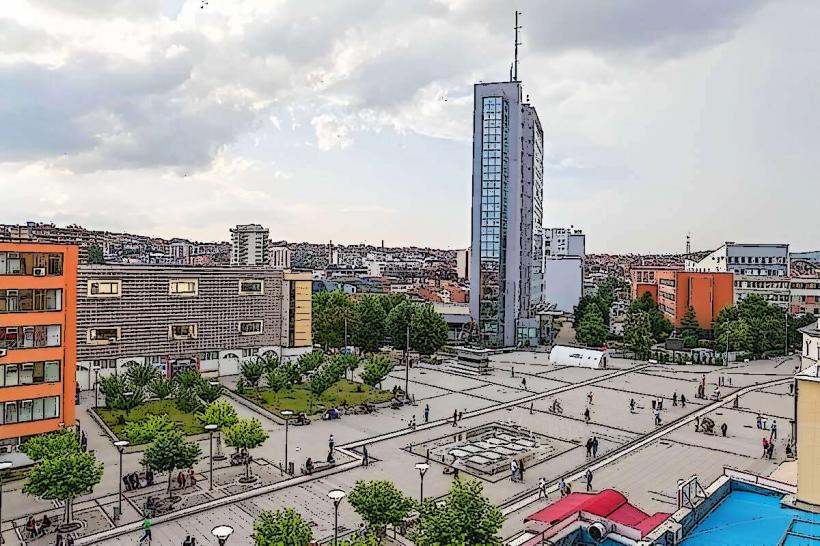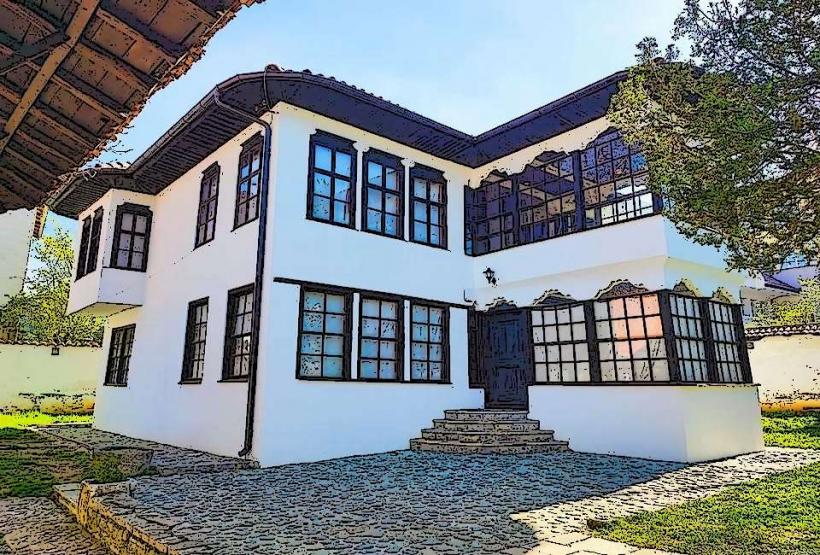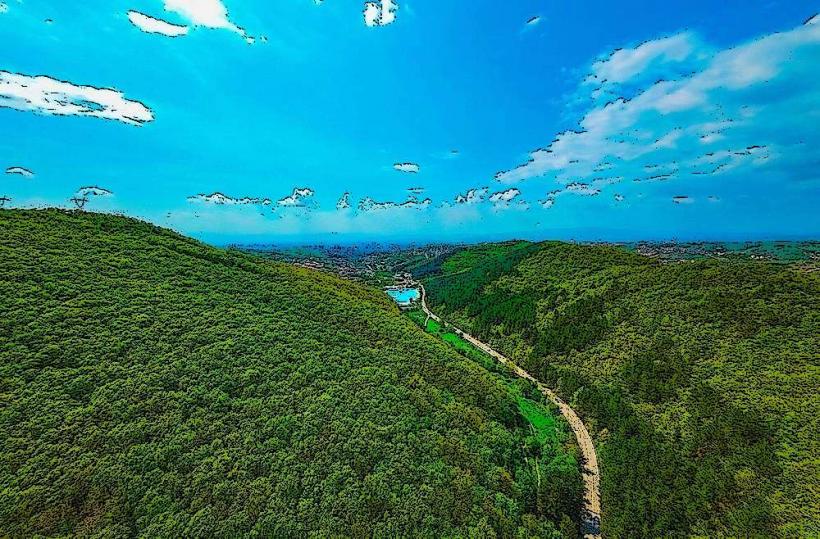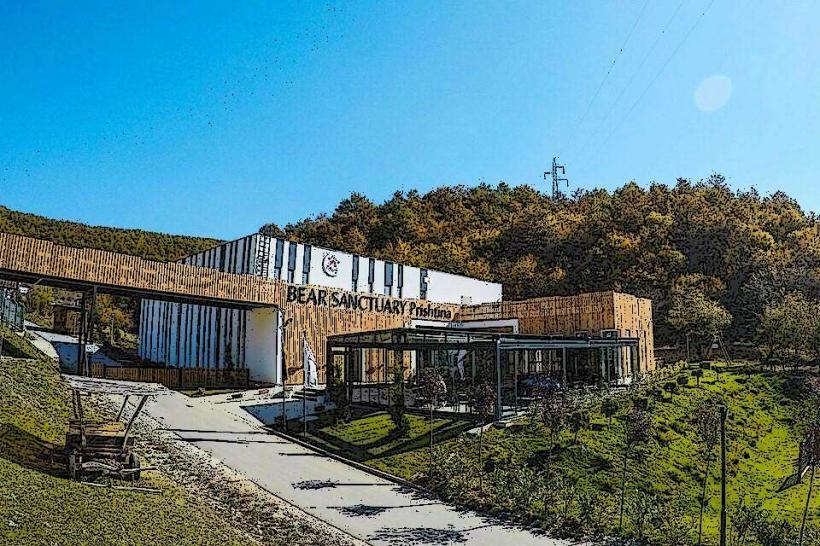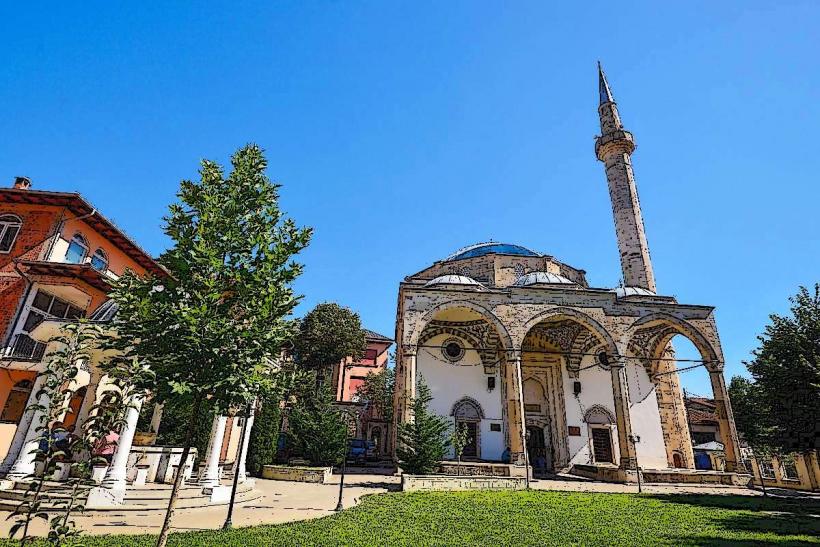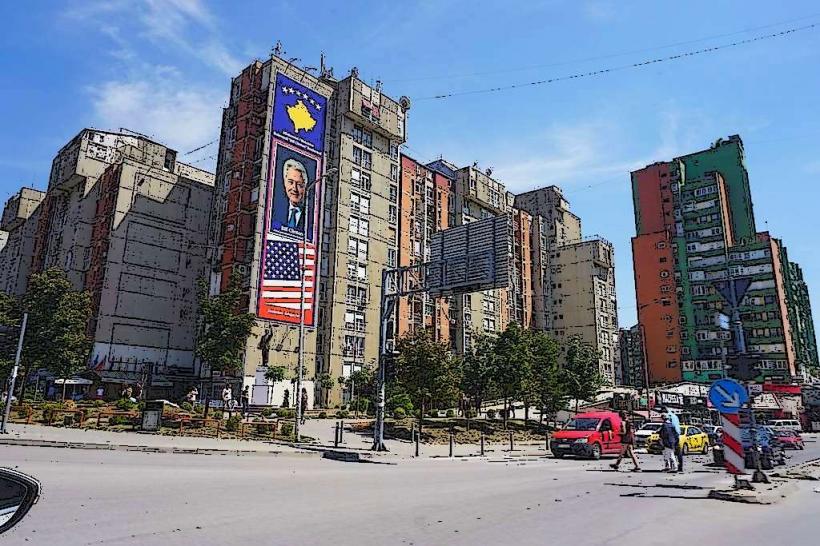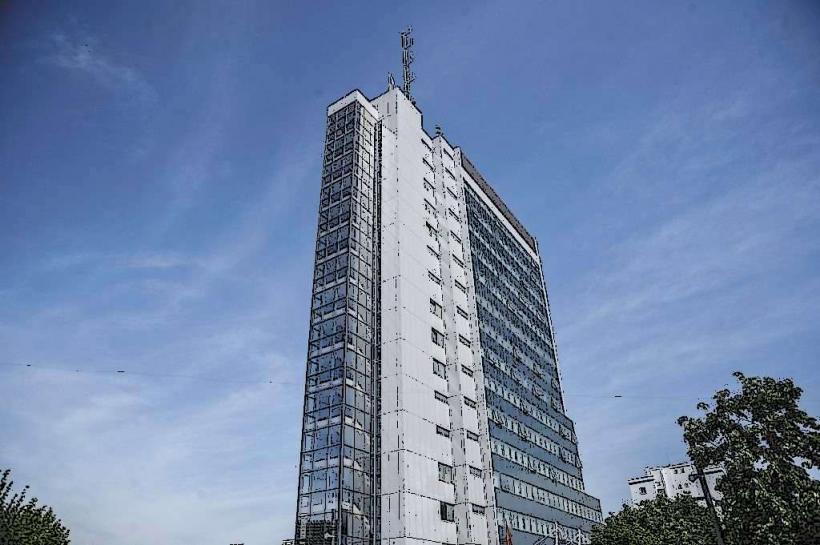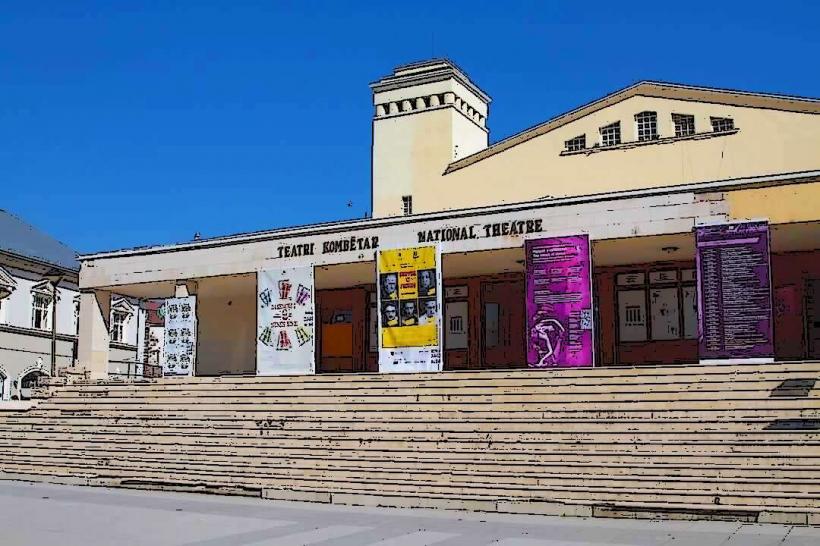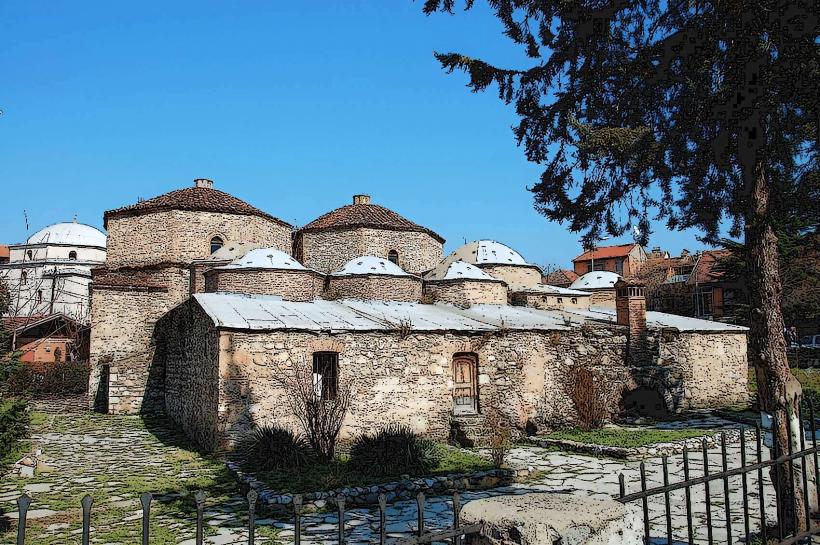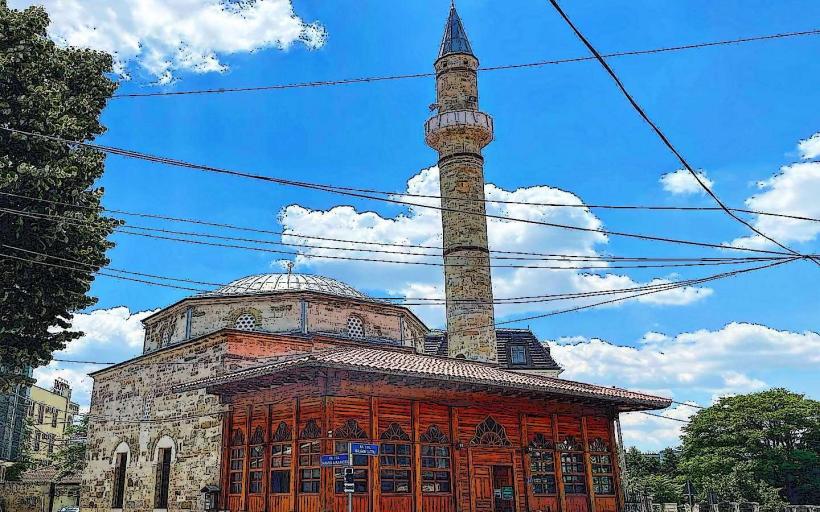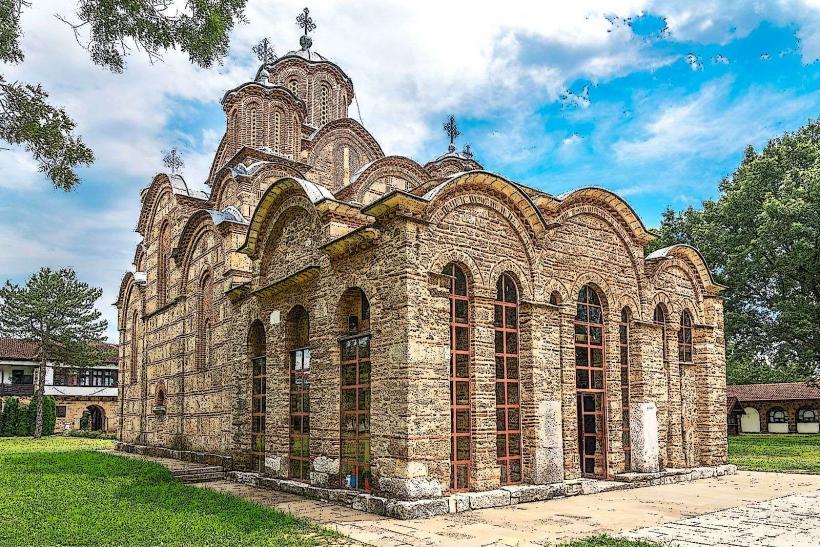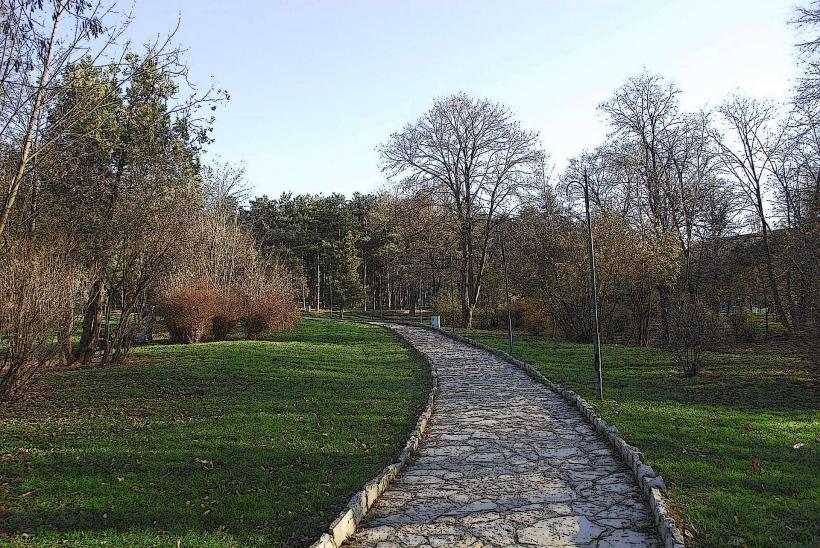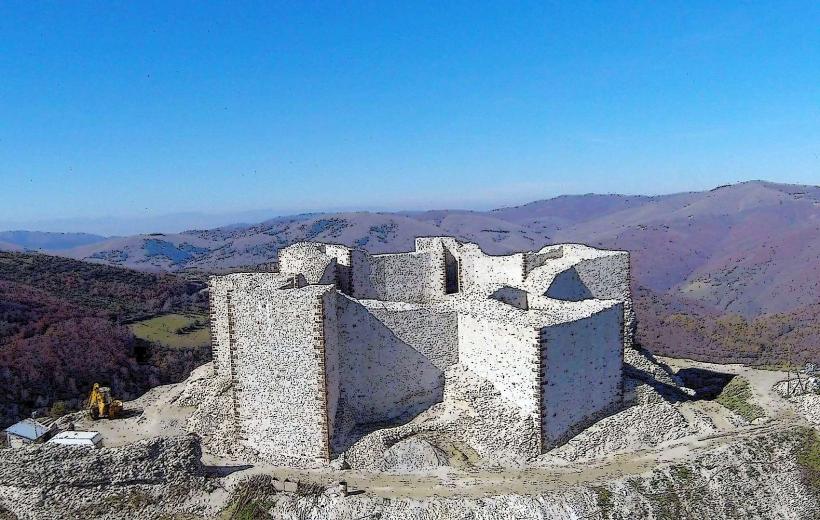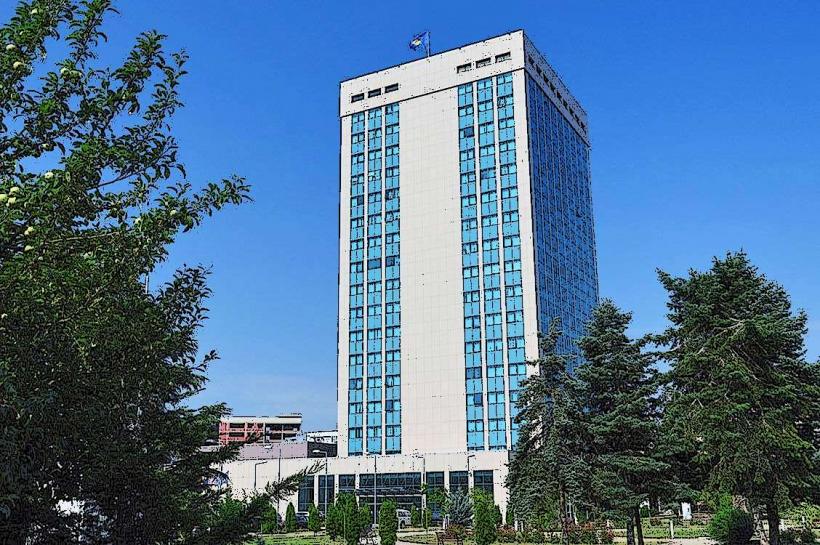Information
Landmark: National Museum of KosovoCity: Pristina
Country: Kosovo
Continent: Europe
The National Museum of Kosovo (Muzeu Kombëtar i Kosovës) is the premier cultural institution in Kosovo dedicated to preserving, displaying, and promoting the country’s rich historical and cultural heritage. Located in the capital, Pristina, the museum offers a comprehensive look at the history, archaeology, ethnology, and art of Kosovo, showcasing the evolution of the region from ancient times to the present day.
History and Establishment
The National Museum of Kosovo was founded in 1949 and has since become one of the most significant cultural landmarks in Kosovo. The museum is housed in a historic building in the heart of Pristina, which has been a part of the city’s urban landscape for many years. The institution is managed by the Ministry of Culture, Youth, and Sports of Kosovo, and it has been an important part of the country's efforts to preserve and showcase its cultural legacy, particularly after Kosovo declared independence in 2008.
The museum’s establishment was crucial for consolidating Kosovo’s national identity, and it plays an important role in educating the public about Kosovo’s history, cultural diversity, and its long journey toward independence.
Museum Structure and Exhibits
The National Museum of Kosovo is divided into several sections, each focused on a different aspect of Kosovo’s history and culture. The main exhibits cover a wide range of topics, offering visitors a thorough overview of the region’s past, from prehistoric times to the modern era.
Archaeology and Prehistory
One of the museum’s key sections is dedicated to archaeology, where visitors can explore Kosovo’s prehistoric past. Artifacts from various ancient civilizations, including the Illyrians, Romans, and Byzantines, are on display. Key highlights include:
- Artifacts from the Illyrian period, showcasing the ancient tribal cultures that inhabited the region.
- Roman and Byzantine artifacts, including statues, pottery, coins, and tools that reflect Kosovo’s importance during these empires.
- Neolithic tools and pottery, illustrating the early development of human civilization in Kosovo.
Medieval Kosovo
The medieval period is another significant focus of the museum, particularly Kosovo’s role during the Medieval Serbian Kingdom and later under the Ottoman Empire. Highlights include:
- Medieval artifacts, including religious icons, manuscripts, and items used by the Serbian Orthodox Church, reflecting Kosovo’s role as a spiritual center.
- Ottoman-era objects, showing the cultural and social impact of the Ottoman Empire on the region.
- A special focus on the Kosovo Battle of 1389, a key historical event in the region.
Ethnology
The ethnological section of the museum showcases the traditional culture of Kosovo, with exhibits on folk costumes, traditional crafts, and everyday life in the region. The collection highlights the diverse ethnic groups that have lived in Kosovo over the centuries, including:
- Traditional Kosovar folk costumes, intricately designed and representative of the different regions and communities within Kosovo.
- Household items and tools, illustrating how people lived in rural Kosovo.
- Religious objects that highlight Kosovo’s cultural and religious diversity, including items from both Muslim and Christian communities.
Art and Contemporary History
The museum also houses a collection of artworks and historical documents, some of which reflect Kosovo’s struggle for independence. These collections include:
- Paintings, sculptures, and other artworks from Kosovo’s most notable artists, particularly those who contributed to the artistic scene during the 20th century.
- Photos, documents, and personal items related to Kosovo's history, particularly from the 20th century, including the period of Yugoslavia, the Kosovo War, and the 1999 NATO intervention.
Kosovo's Struggle for Independence
A dedicated part of the museum highlights Kosovo's modern history, focusing on the country’s struggle for independence. It features:
- Photographs, documents, and artefacts related to the Kosovo Liberation Army (KLA) and the political movements that led to Kosovo declaring independence in 2008.
- Personal stories and testimonies from individuals who played key roles in the independence movement.
The Museum’s Architecture
The National Museum of Kosovo’s building is notable for its traditional architectural style, with an emphasis on functionality and space. The architecture reflects the historical periods and cultural influences of the region, incorporating both Ottoman and modern architectural elements.
Educational and Cultural Role
Beyond being a museum, the National Museum of Kosovo plays an important role in education and cultural preservation. It is involved in various activities, including:
- Workshops and educational programs for schools and universities, which help instill a sense of history and cultural pride in young generations.
- Temporary exhibitions that focus on specific aspects of Kosovo’s heritage, such as traditional crafts, famous figures, or key historical events.
- Hosting cultural events, lectures, and international collaborations that help promote Kosovo’s culture on the world stage.
Visitor Experience
Visitors to the National Museum of Kosovo can expect a well-curated and informative experience, with detailed explanations of each exhibit. The museum offers a comprehensive view of Kosovo’s history, culture, and its people’s resilience through time. The displays are interactive, with a mix of traditional exhibits, multimedia presentations, and informative labels in multiple languages, making it accessible to both local and international visitors.
Conclusion
The National Museum of Kosovo is a vital cultural institution that offers a deep dive into the history, traditions, and struggles of the people of Kosovo. Its diverse collections provide a rich narrative of the region’s past, from ancient civilizations to the modern-day challenges of statehood. As Kosovo continues to evolve, the museum remains an important symbol of the country’s cultural heritage and a key space for reflection on its historical journey and national identity.


